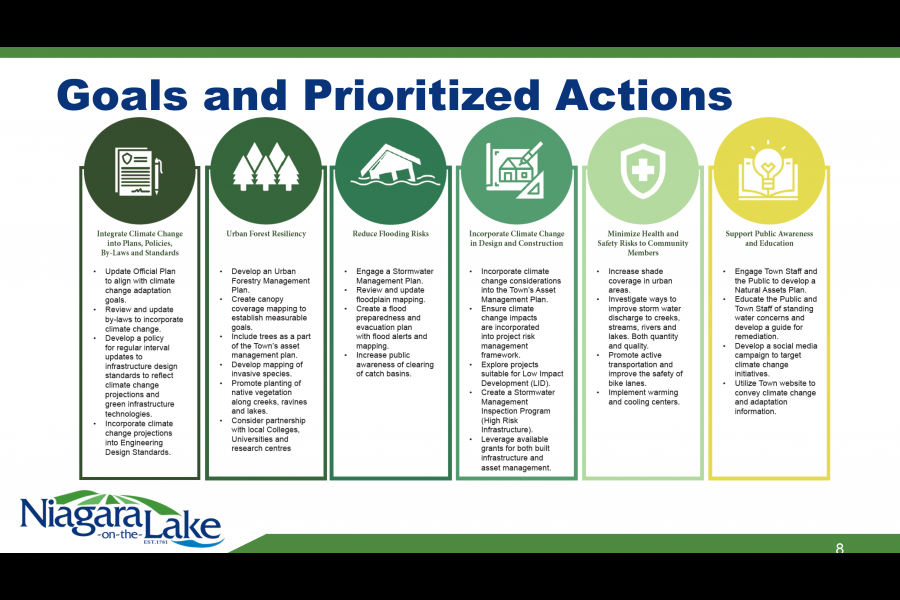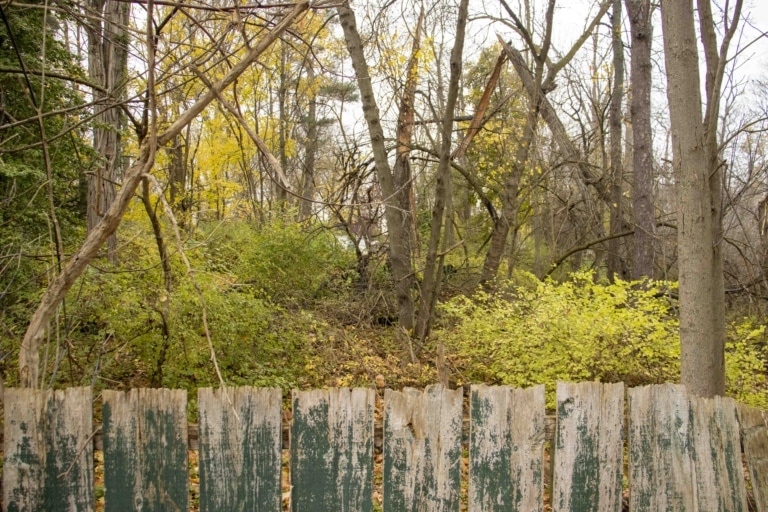Flooding, torrential rain, windstorms and suffocating heat — these are just a few of the climate change-driven threats Niagara-on-the-Lake is preparing to deal with in its newly released climate change adaptation plan.
“This body of work represents a significant effort towards the town’s environmental sustainability,” chief administrative officer Marnie Cluckie said when introducing the plan to council last week.
“I think we can see the impact of climate change in the last few years, even right here in Niagara with warmer, wetter weather and impacts to our infrastructure.”
The plan arose out of three years of work in tandem with Brock University’s Niagara Adapts program and the town’s environmental advisory committee.
Environmental advisory committee member and Lake Report environmental columnist, Kyra Simone, said the plan provides a good starting point for the town.
“But it is imperative that these measures actually be implemented as soon as possible,” Simone said.
The plan provides insight into some of the changes affecting NOTL. It estimates that by 2051, average annual temperatures could be 14.7C, up from 8.9C between 1951 and 1980.
By 2051, we could have 45 days annually with temperatures above 30C, compared to the roughly 10 to 13 days experienced now.
Likewise, the number of days under -15C is expected to decrease to six from 21 by 2051.
The plan also claims a potential 10 to 20 per cent increase in rain and wet days as well as more frequent melting and freezing cycles, which put a particular strain on infrastructure such as roads.
The climate change plan lays out six main goals for the town: to integrate climate change into policy, to build a more resilient urban forest, to reduce flooding risks, incorporate climate change into construction, minimize risks to the community, and support public awareness and education.
Some of the items are intended to mitigate the acceleration of climate change (such as an increased focus on planting trees) while others are intended as ways for the town to adapt to the changes, such as new development and construction policies.
The town’s plan provides extensive details on how it will approach those six categories.
Some examples include: considering trees as municipal assets and building a comprehensive tree map of the town, the creation of a detailed stormwater management plan and flood preparedness/evacuation plan, and a focus on low-impact development strategies.
Low-impact developments are construction projects that seek to mimic natural processes to handle stormwater. These processes protect water quality and natural habitats, according to the U.S. Environmental Protection Agency.
The town’s plan considers making low-impact development a priority for all public works as well as implementing low-impact standards for private development.
All in, there are 27 implementation items associated with the plan, scheduled to be carried out between 2022 and 2024.
One of the main roadblocks for municipal projects — money — does not seem to be an issue at this point as the immediate implementation projects are already being funded.
“At this time there are no additional funds being requested,” town treasurer Kyle Freeborn said.
“There are a number of approved 2022 projects that align with the goals and actions presented.”
Future funds will be requested on a project-by-project basis, said Victoria Steele, executive assistant to the lord mayor.
Several projects included in the capital budget already will be among the first issues addressed.
Examples include: a $200,000 pollution prevention control plan, a $215,000 rehabilitation of the Garrison Village storm sewer and $100,000 for repairs to the inflow and infiltration system at Mississauga Beach and into Chautauqua, according to the report.
Steele said more immediate action items will be determined in co-operation with the environmental advisory committee in the coming weeks.
One of the main goals of the plan is to increase public awareness and education about the impact of climate change.
“Education and training will ensure that we leverage opportunities to build internal and community awareness of climate change,” Steele said.
Coun. Allan Bisback raised concerns the plan does not pursue funding from other levels of government.
“It is certainly intended to seek upper level funding where possible,” Steele responded.
After speaking with local insurance providers, Coun. Wendy Cheropita said she learned that the biggest claims in NOTL are due to water and wind damage.
She encouraged Steele and town staff to consider increasing wind storms as an important part of the plan.
Steele said that was a part of the team’s considerations but will examine working more closely with insurance providers as the plan gets implemented.
Coun. Norm Arsenault, who serves on the environmental advisory committee, said the team was committed to ensuring the plan moves forward and that details on some of the first items to be implemented would come before council soon.
Steele reiterated staff’s commitment to following through with the plan.
“There are many next steps when it comes to this plan. We are very determined that it’s not just going to sit on the shelf once it’s approved,” she said.











